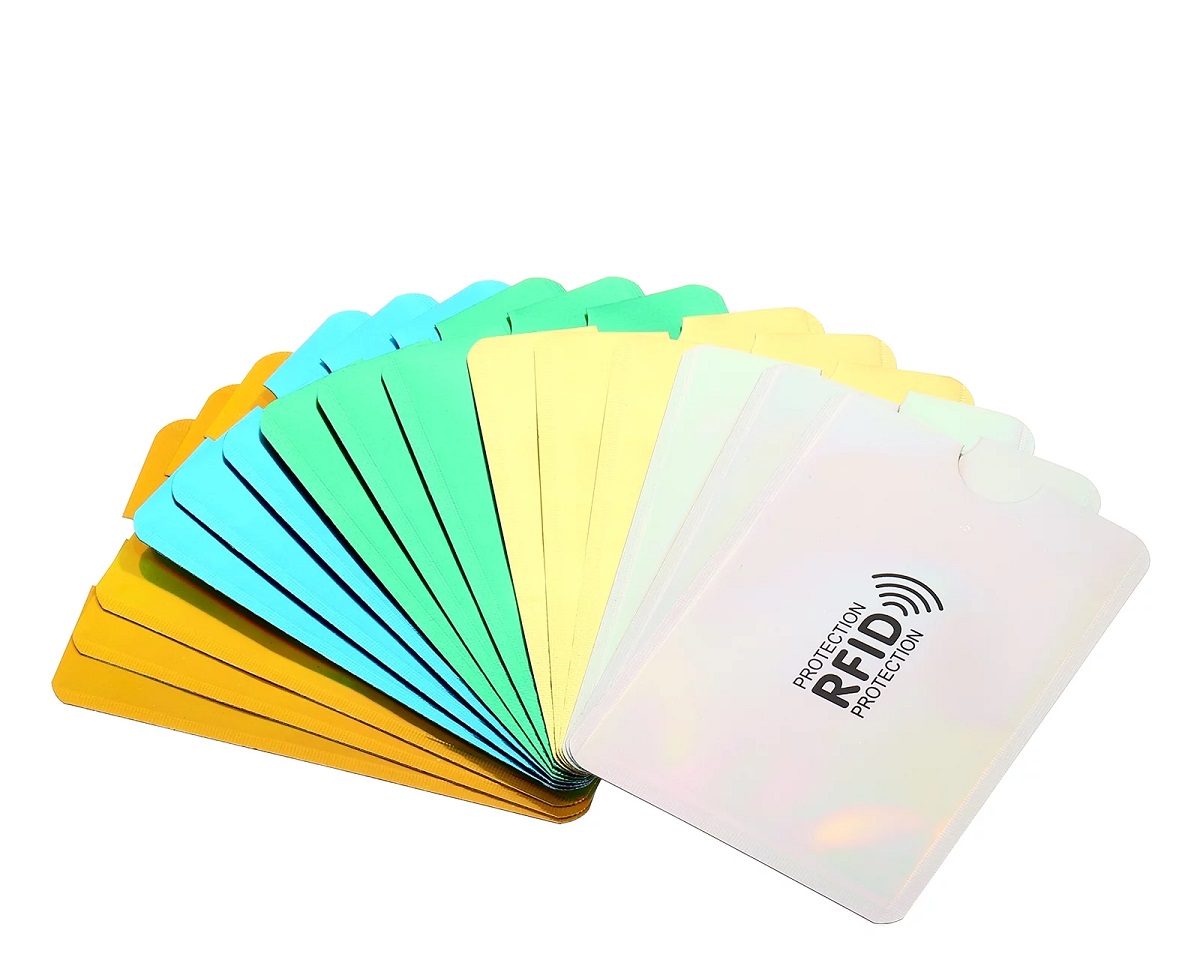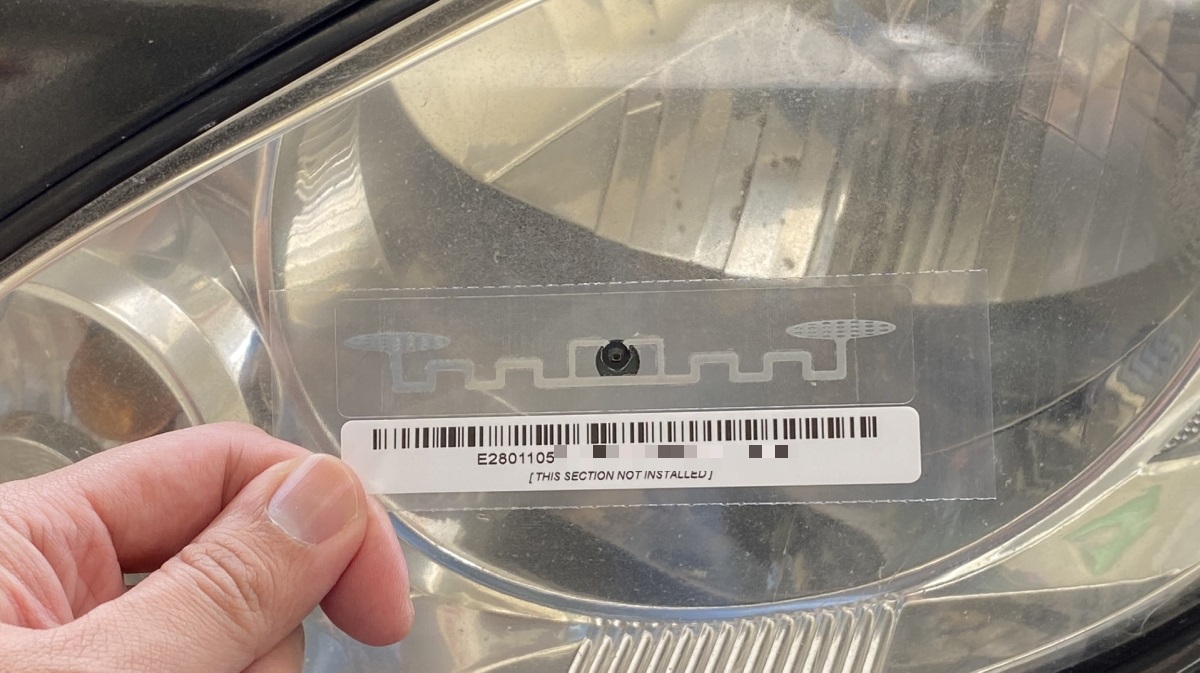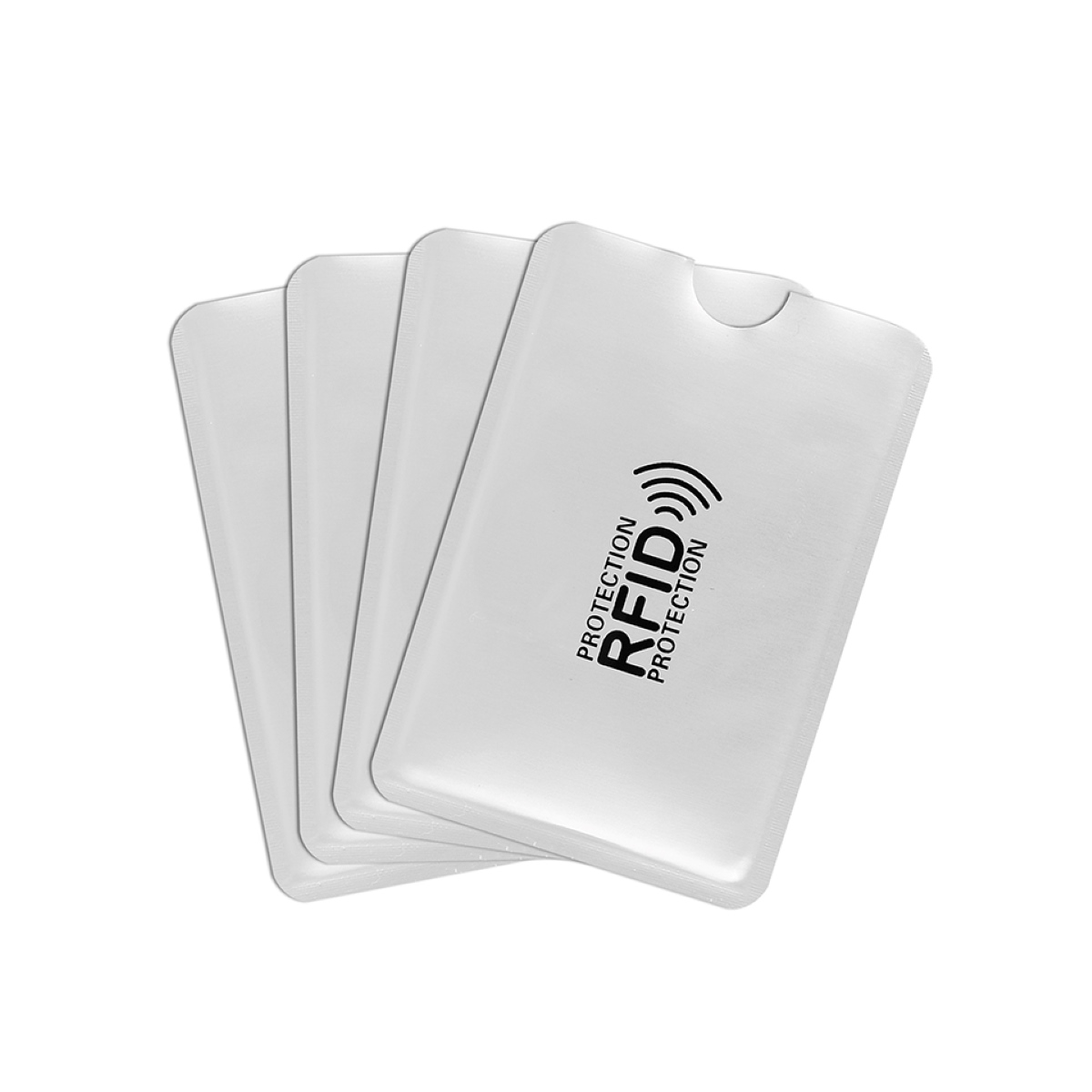Introduction
In today’s modern world, technology plays a crucial role in transforming various industries and revolutionizing the way we live and work. One such technology that has gained significant attention is RFID, or Radio Frequency Identification. RFID has become increasingly popular across multiple sectors, from retail and healthcare to manufacturing and logistics. With its ability to track and identify objects using radio waves, RFID offers numerous benefits and has the potential to improve efficiency, reduce costs, and enhance security.
RFID technology uses small tags or transponders that contain unique identification codes and antennas. These tags can be attached to almost any object, ranging from products in a store to medical equipment in a hospital. When an RFID reader emits radio waves, these tags respond by transmitting their identification information, allowing the reader to capture the data and store it in a centralized system.
The use of RFID has become increasingly prevalent due to its many advantages. This article will delve deeper into how RFID works, explore its benefits, and highlight its applications in various industries. By the end, you will gain a comprehensive understanding of why RFID is becoming an essential tool for businesses worldwide.
What is RFID?
RFID, short for Radio Frequency Identification, is a technology that enables the identification and tracking of objects using radio waves. It consists of small tags or transponders that contain unique identification codes and antennas. These tags can be attached or embedded into products, assets, or even living organisms. When an RFID reader emits radio waves, the tags respond by transmitting their identification information, which is then captured by the reader and processed by a computer system.
Unlike barcodes that require a direct line of sight for scanning, RFID tags can be read from a distance without the need for manual intervention. This makes RFID an ideal solution for a variety of applications where speed, accuracy, and automation are critical.
RFID technology operates on various frequency bands, including low frequency (LF), high frequency (HF), ultra-high frequency (UHF), and microwave. Each frequency band has its own advantages and is suitable for different use cases. For example, LF RFID is commonly used for animal tracking, while UHF RFID is preferred for inventory management and supply chain applications due to its longer read range.
In addition to identification and tracking, RFID tags can also store additional data such as product details, expiration dates, and maintenance records. This can provide valuable information throughout an object’s lifecycle, enabling efficient inventory management, optimized maintenance schedules, and improved customer service.
Overall, RFID technology offers a robust and efficient solution for automating processes, enhancing security, and improving overall operational efficiency. Its versatility and scalability have made it an essential tool in industries such as retail, healthcare, manufacturing, logistics, and more. The next section will delve into how RFID works, providing a deeper understanding of the underlying principles behind this powerful technology.
How RFID Works
RFID technology operates on the principle of using radio waves to communicate between tags and readers. It involves three main components: RFID tags, RFID readers, and a backend system for data management and analysis.
RFID tags are small devices that consist of a microchip and an antenna. The microchip stores the unique identification information and other relevant data, while the antenna enables the transmission and reception of radio waves. RFID tags can either be passive, battery-assisted passive (BAP), or active. Passive tags rely on the energy emitted by the RFID reader to power their operation, while BAP tags have a small battery that helps boost the signal strength. Active tags have their own power source, allowing them to transmit signals over longer distances.
RFID readers, on the other hand, are devices that emit radio waves and capture the information transmitted by the tags. These readers can be stationary or handheld, depending on the application. When a reader comes into range of an RFID tag, it emits radio waves that power the tag and prompt it to transmit its identification information. The reader captures this information and sends it to the backend system for processing and analysis.
The backend system consists of software and databases that manage the received RFID data. It stores the tag information, tracks the movement of tagged objects, and provides real-time visibility and analytics. This data can then be integrated with existing systems, such as inventory management or asset tracking software, to enable seamless operations and decision-making.
The key advantage of RFID technology is its ability to read multiple tags simultaneously and without the need for a direct line of sight. This enables rapid and accurate data capture, making it ideal for applications where speed and efficiency are paramount. Whether it’s tracking inventory in a retail store, monitoring the movement of goods in a warehouse, or ensuring the safety of patients in a hospital, RFID provides a reliable and effective solution.
In the next section, we will delve into the numerous benefits of using RFID technology in various industries, highlighting its potential to drive efficiency, reduce costs, and enhance security.
Benefits of Using RFID
RFID technology offers a wide range of benefits across various industries. From increased efficiency and productivity to improved security and cost savings, RFID has become an invaluable tool for businesses worldwide. Let’s explore some of the key advantages of using RFID.
Increased Efficiency and Productivity: RFID enables automation and streamlines processes, leading to enhanced efficiency and productivity. With the ability to quickly read multiple tags simultaneously, RFID eliminates the need for manual scanning, reducing human errors and saving time. This allows organizations to handle larger volumes of inventory, assets, or personnel in a shorter period, improving overall operational efficiency.
Cost Savings: RFID technology can result in significant cost savings. By automating tasks and reducing the need for manual labor, businesses can lower operational costs. RFID improves inventory accuracy, minimizing stockouts and overstocks, optimizing ordering and replenishment processes, and reducing waste and spoilage. Additionally, RFID helps prevent theft and loss, reducing financial losses associated with shrinkage. These cost savings contribute to a healthier bottom line for businesses.
Improved Inventory Management: RFID provides real-time visibility and accurate inventory tracking. With RFID tags attached to products or assets, businesses can easily monitor their location, quantity, and movement. This enables better inventory control, ensuring the right products are in stock at the right time. RFID also facilitates efficient inventory audits and minimizes discrepancies, reducing the time and effort required for manual inventory counts.
Enhanced Security: RFID technology enhances security measures by enabling better access control and asset tracking. RFID tags can be used to grant or restrict access to specific areas or equipment, ensuring only authorized personnel can enter restricted areas. Additionally, RFID enables tracking and monitoring of valuable assets, helping prevent theft or unauthorized removal. The ability to easily locate and identify assets using RFID technology enhances overall security within organizations.
Preventing Counterfeit Products: RFID tags can be used to authenticate products, protecting against counterfeiting and unauthorized distribution. With unique identification codes embedded in the tags, businesses and consumers can easily verify the authenticity and origin of a product. This helps maintain brand reputation, ensures consumer safety, and reduces the potential financial and legal risks associated with counterfeit goods.
Tracking and Monitoring: RFID technology enables robust tracking and monitoring capabilities. From tracking the movement of goods in supply chain operations to monitoring the location and condition of assets, RFID provides real-time visibility and valuable insights into operations. This allows businesses to identify bottlenecks, optimize workflows, and make informed decisions based on accurate and up-to-date data.
Incorporating RFID technology into various industries can lead to significant advancements and improvements. In the following sections, we will delve deeper into the specific applications of RFID across industries such as retail, healthcare, manufacturing, logistics, and agriculture.
Increased Efficiency and Productivity
One of the significant benefits of using RFID technology is the increased efficiency and productivity it brings to businesses. By automating processes and eliminating manual tasks, RFID streamlines operations and allows companies to accomplish more in less time. Here are some ways in which RFID can enhance efficiency and productivity:
Quick and Accurate Data Capture: RFID enables the swift and accurate capture of data. Unlike traditional barcode scanning, which requires line-of-sight and manual scanning, RFID allows multiple tags to be read simultaneously and without direct contact. This means that items can be identified and tracked much faster, reducing the time needed for manual data entry and processing.
Reduced Human Error: Manual data entry is prone to human error, such as mistyping or misreading information. RFID technology eliminates the need for manual data entry, minimizing the risk of errors. By automatically capturing and storing data, RFID ensures that accurate information is recorded and readily available for analysis and decision-making.
Optimized Workflows: RFID enables the automation of various tasks, optimizing workflows and reducing bottlenecks. For example, in a retail environment, RFID can automate inventory management processes such as stock counts and replenishment. This not only saves time but also ensures that products are always available on the shelves, improving customer satisfaction and sales.
Improved Asset Tracking: RFID allows for efficient and precise tracking of assets. Whether it’s tracking equipment in a hospital or tools in a manufacturing facility, RFID tags can be attached to objects to monitor their location and movement. This eliminates the need for manual searching and reduces the chances of items being misplaced or lost, which can significantly impact productivity.
Enhanced Employee Productivity: By automating manual tasks, RFID frees up employees’ time, allowing them to focus on more value-added activities. For example, instead of spending hours manually entering inventory data, employees can use their time to assist customers, work on strategic initiatives, or handle other important responsibilities. This leads to increased productivity and a more efficient use of human resources.
Real-Time Visibility and Analytics: With RFID, businesses gain real-time visibility into their operations. They can track the movement of goods, monitor inventory levels, and identify bottlenecks in the supply chain. This visibility allows for proactive decision-making, enabling businesses to respond quickly to changes and optimize their processes for improved efficiency.
RFID technology has proven to be a game-changer in improving efficiency and productivity across various industries. By automating processes, reducing errors, and providing real-time visibility, RFID enables companies to streamline their operations and achieve higher levels of productivity. In the following sections, we will explore the specific applications of RFID in industries such as retail, healthcare, manufacturing, logistics, and agriculture.
Cost Savings
Implementing RFID technology can lead to significant cost savings for businesses across various industries. By streamlining processes, reducing errors, and optimizing resource utilization, RFID offers multiple opportunities to cut costs. Here are some ways in which RFID can result in significant cost savings:
Reduced Labor Costs: RFID technology automates tasks that would otherwise require manual labor, resulting in reduced labor costs. For example, in a retail setting, RFID tags can be used to automate inventory counts, eliminating the need for employees to manually scan each product. This frees up employees’ time, allowing them to focus on more value-added tasks and reducing the need for additional staffing.
Improved Inventory Accuracy: RFID provides real-time visibility and accurate tracking of inventory. With RFID tags attached to products, businesses can precisely monitor stock levels, reducing the occurrence of stockouts or overstocks. This helps optimize inventory management and eliminates the need to tie up capital in excess inventory or lose sales due to insufficient stock. Improved inventory accuracy also minimizes the risk of waste and spoilage, further reducing costs.
Optimized Supply Chain: RFID enables efficient supply chain management, leading to cost savings. With real-time visibility into the movement of goods, businesses can identify and address inefficiencies, eliminate unnecessary delays, and optimize transportation routes. This helps reduce transportation costs, minimize handling and storage fees, and improve overall supply chain efficiency.
Preventing Theft and Loss: RFID technology can help prevent theft and loss, resulting in significant cost savings. By tagging assets or products with RFID tags, businesses can track and monitor their movement. This discourages theft and acts as a deterrent because the items can be easily located and identified. The reduction in theft and loss translates to direct cost savings and protects the company’s bottom line.
Streamlined Processes: RFID streamlines processes, reducing operational inefficiencies and associated costs. For example, in manufacturing, RFID can facilitate the automation of material tracking and enable just-in-time inventory management. This minimizes the need for excess inventory, eliminates manual data entry, reduces the risk of errors, and enhances overall production efficiency.
Improved Maintenance: RFID technology enables efficient maintenance management, leading to cost savings. By tagging equipment or assets with RFID tags, businesses can track maintenance schedules, monitor usage, and identify potential issues early on. This allows for proactive maintenance, reducing the occurrence of unplanned downtime and costly repairs.
The cost savings achieved through the implementation of RFID technology can have a significant impact on a company’s bottom line. Whether it’s reducing labor costs, optimizing inventory management, preventing theft, or streamlining processes, RFID offers numerous opportunities for businesses to operate more efficiently and effectively. In the following sections, we will explore how RFID is utilized in specific industries such as retail, healthcare, manufacturing, logistics, and agriculture.
Improved Inventory Management
Effective inventory management is crucial for businesses to ensure smooth operations and meet customer demands. RFID technology offers significant benefits in improving inventory management processes, leading to increased efficiency and cost savings. Here are some ways in which RFID improves inventory management:
Real-Time Visibility: RFID provides real-time visibility into inventory levels and locations. With RFID tags attached to products or assets, businesses can track and monitor their movement throughout the supply chain. This visibility allows for accurate, up-to-date information on stock levels, enabling organizations to make informed decisions and respond quickly to changes in demand.
Automated Stock Counts: RFID enables automated and accurate stock counts. Unlike traditional barcode scanning, which requires individual scans, RFID can read multiple tags simultaneously without line-of-sight. This significantly reduces the time and effort required to conduct inventory counts, allowing businesses to perform frequent and more accurate stock checks. The automation of stock counts also helps minimize disruptions to operations.
Improved Order Accuracy: By using RFID technology in the order fulfillment process, businesses can reduce errors and improve order accuracy. RFID tags can be used to verify the contents of each order, ensuring that the correct products are picked and packed. This helps prevent incorrect shipments and reduces the need for costly returns or reshipments due to order errors.
Prevention of Stockouts and Overstocks: RFID enables businesses to optimize inventory levels, preventing stockouts and overstocks. With real-time visibility into stock levels, businesses can ensure that products are replenished in a timely manner, reducing the risk of stockouts and missed sales opportunities. RFID also provides insights into demand patterns, allowing for more accurate forecasting and planning to prevent overstocks.
Enhanced Receiving and Storage Processes: RFID can improve the efficiency and accuracy of receiving and storage processes. RFID tags can be scanned and recorded electronically upon arrival, reducing the need for manual data entry. This speeds up the receiving process, reduces errors, and ensures that inventory is stored in the correct location. RFID also enables the tracking of expiration dates and batch numbers, facilitating the efficient management of perishable or time-sensitive goods.
Optimized Replenishment: RFID technology improves replenishment processes by automating stock level monitoring and triggering reorder notifications. With RFID tags on products, businesses can set up automated alerts to notify when stock levels fall below a predetermined threshold. This ensures timely replenishment, minimizes stockouts, and reduces the risk of excess inventory holding costs.
Efficient Returns Management: RFID facilitates returns management by providing accurate information about the returned items. RFID tags can be used to identify and track returned products, ensuring accurate inventory updates and faster processing of returns. This enables businesses to quickly reintegrate returned products back into their inventory or supply chain, reducing waste and improving overall efficiency.
By leveraging RFID technology, businesses can revolutionize their inventory management processes and achieve higher levels of accuracy, efficiency, and cost savings. Real-time visibility, automated stock counts, improved order accuracy, and optimized replenishment processes are just a few of the benefits that RFID brings to inventory management. In the following sections, we will explore how different industries utilize RFID to enhance their specific inventory management practices.
Enhanced Security
Security is a top priority for businesses, and RFID technology provides enhanced security measures across various industries. By utilizing RFID tags and readers, businesses can improve access control, asset tracking, and counterfeit prevention. Here are some ways in which RFID enhances security:
Access Control: RFID technology enables secure access control to restricted areas. RFID tags can be assigned to authorized personnel, allowing them access to specific locations or equipment. When an individual with an authorized tag comes into proximity with an RFID reader, the system grants access. This eliminates the need for physical keycards or passwords and reduces the risk of unauthorized entry, enhancing overall security.
Asset Tracking: RFID tags enable efficient and accurate tracking of valuable assets. By attaching RFID tags to assets, businesses can monitor their whereabouts and movement in real-time. This deters theft and loss and ensures quick identification and recovery in case of misplaced or stolen assets. The ability to track assets using RFID technology provides an additional layer of security and reduces the financial impact of theft or loss.
Counterfeit Prevention: RFID tags can be used to authenticate products and protect against counterfeiting. Each RFID tag contains a unique identifier that cannot be duplicated easily. By verifying the authenticity of products using RFID scanners, businesses can ensure that customers receive genuine goods. This helps safeguard brand reputation, maintain customer trust, and eliminate the financial and legal risks associated with counterfeit products.
Tamper Detection: RFID technology can detect tampering or unauthorized access to products or assets. Some RFID tags are equipped with tamper-evident features, such as breakable circuits or seals. If an attempt is made to tamper with or remove the tag, it will trigger an alarm or indicate that the item has been compromised. This helps businesses identify potential security breaches and take immediate action to protect their assets.
Improved Product Recall: In situations where a product recall is necessary, RFID technology facilitates a swift and accurate recall process. By tagging products with RFID tags, businesses can easily identify affected products and quickly remove them from circulation. This helps protect consumers from potentially harmful products and minimizes the financial and reputational impact of a recall.
Data Encryption: RFID systems can incorporate data encryption techniques to ensure secure transmission of information. By encrypting the data stored on RFID tags and using secure communication protocols, businesses can protect sensitive information from unauthorized access or interception. This is particularly important in industries such as healthcare or finance where data privacy and confidentiality are paramount.
RFID technology provides businesses with enhanced security measures, from access control and asset tracking to counterfeit prevention and tamper detection. The ability to authenticate products, detect unauthorized access, and track assets in real-time helps businesses mitigate risks, protect valuable assets, and ensure a secure operating environment. In the following sections, we will explore how RFID is utilized to strengthen security measures in specific industries such as retail, healthcare, manufacturing, logistics, and agriculture.
Preventing Counterfeit Products
Counterfeit products pose a significant threat to businesses and consumers alike, resulting in financial losses, brand reputation damage, and potential risks to consumer safety. RFID technology provides an effective solution to prevent counterfeit products and protect businesses and consumers. Here’s how RFID helps in combating counterfeit products:
Authentication: RFID tags can be used to authenticate products and verify their authenticity. Each RFID tag is embedded with a unique identifier or encrypted code that is difficult to replicate. By scanning the RFID tag, businesses and consumers can quickly determine whether a product is genuine or counterfeit. This authentication process provides assurance and helps protect consumers from purchasing counterfeit goods.
Anti-Tampering Features: RFID tags can include anti-tampering features that make it difficult for counterfeiters to reproduce. For example, some RFID tags are designed to break or become damaged if an attempt is made to remove or alter them. These visible signs of tampering make it easier to identify counterfeit products and deter counterfeiters from attempting to replicate the RFID tag.
Track and Trace: RFID technology enables tracking and tracing products throughout the supply chain, creating an audit trail of a product’s journey. By monitoring a product’s movements using RFID tags, businesses can ensure that products are following the legitimate distribution channels and not being diverted or counterfeit. This track and trace capability helps identify unauthorized resellers or distributors and allows businesses to take immediate action against counterfeit operations.
Supply Chain Visibility: RFID technology provides real-time visibility and transparency in the supply chain. By utilizing RFID tags throughout the supply chain, businesses can track and monitor the movement of products from the manufacturer to the end consumer. This visibility helps identify any gaps or vulnerabilities in the supply chain where counterfeit products could potentially be introduced. By identifying these weak points, businesses can implement additional security measures and prevent counterfeit products from entering the market.
Consumer Education: RFID technology can be leveraged to educate consumers about the importance of authentic products and how to identify counterfeit goods. By utilizing RFID tags or labels that contain QR codes or NFC technology, consumers can scan the product to access information on a company’s official website or app. This allows businesses to provide educational content on how to identify genuine products, verify authentication, and report suspected counterfeit goods.
Brand Protection: Implementing RFID technology with authentication features helps safeguard a brand’s reputation and build trust with consumers. By ensuring that products are genuine and free from counterfeiting, businesses can maintain the integrity of their brand and provide consumers with confidence in their purchases. This, in turn, fosters customer loyalty and protects the brand’s market position.
RFID technology offers significant capabilities in the fight against counterfeit products. By providing authentication, anti-tampering features, track and trace capabilities, supply chain visibility, and consumer education, RFID helps businesses proactively prevent counterfeit goods from reaching the market. In the following sections, we will explore how different industries utilize RFID to combat counterfeiting and protect consumers.
Tracking and Monitoring
RFID technology revolutionizes tracking and monitoring capabilities, providing businesses with real-time visibility and valuable insights into their operations. By utilizing RFID tags and readers, businesses can track and monitor the movement of assets, products, or even living organisms. Here’s how RFID enhances tracking and monitoring across various industries:
Inventory Management: RFID enables efficient and accurate inventory tracking. Each item or product is tagged with an RFID tag, allowing businesses to quickly and easily identify and locate specific items. This eliminates the need for time-consuming manual searches and reduces the risk of errors. Real-time visibility into inventory levels and locations enables businesses to optimize stocking levels, streamline replenishment processes, and improve overall inventory management.
Supply Chain Visibility: RFID provides end-to-end visibility in the supply chain. By tagging products and utilizing RFID readers at various checkpoints, businesses can track the movement of goods from manufacturing to distribution to retail. This visibility allows for better coordination, reduced delays, and enhanced efficiency in the supply chain. Real-time updates and alerts enable businesses to respond quickly to disruptions or bottlenecks, ensuring the smooth flow of products.
Asset Tracking: RFID technology enables efficient and accurate tracking of valuable assets. By attaching RFID tags to assets, businesses can monitor their location, movement, and condition. This helps prevent loss and theft, provides insurance documentation, and ensures compliance with regulatory requirements. RFID asset tracking eliminates the need for manual record-keeping and reduces the time spent searching for misplaced assets, increasing operational efficiency.
Personnel Tracking: RFID tags can also be used to track and monitor personnel within a facility or a specific work area. This is especially useful in industries such as healthcare or construction, where accurate personnel tracking is crucial for safety and security purposes. RFID-based personnel tracking provides real-time information on the location and movements of staff members, allowing for better resource allocation and emergency response planning.
Logistics and Transportation: RFID technology improves tracking and monitoring in logistics and transportation operations. RFID tags can be attached to vehicles, pallets, or containers, enabling real-time visibility into their whereabouts. This allows businesses to track shipments, monitor delivery times, and optimize transportation routes. RFID also provides data on environmental conditions such as temperature or humidity during transportation, ensuring the integrity of sensitive goods such as pharmaceuticals or perishable items.
Livestock and Agriculture Management: RFID tags are widely used in livestock and agriculture management to track and monitor animals or crops. RFID tags can be embedded in ear tags or attached to collars, allowing farmers to track individual animals, monitor their health, and manage breeding or feeding programs. In agriculture, RFID tags can be used to track specific crop yields, monitor irrigation systems, or manage pesticide applications.
By utilizing RFID technology, businesses can greatly enhance their tracking and monitoring capabilities. Real-time visibility, accurate inventory management, supply chain transparency, and efficient asset tracking are just a few of the benefits that RFID provides. In the following sections, we will explore how different industries leverage RFID technology to improve tracking and monitoring processes in their respective domains.
RFID in Various Industries
RFID technology has found widespread applications across various industries, revolutionizing operations and providing valuable benefits. Let’s explore how different sectors leverage RFID to enhance their processes and achieve greater efficiency:
Retail:
In the retail industry, RFID is used for inventory management, ensuring accurate stock levels and minimizing stockouts. RFID tags on products enable quick and automated inventory counts, reducing the time and effort required for manual checks. This allows retailers to optimize replenishment, improve stock accuracy, and enhance the overall shopping experience for customers.
Healthcare:
In healthcare, RFID plays a crucial role in asset tracking, patient monitoring, and medication management. RFID tags on medical equipment help hospitals locate and manage equipment efficiently, reducing the risk of lost or misplaced items. RFID wristbands enable accurate patient identification, ensuring the right treatment and reducing medical errors. RFID tags on medication packages help prevent medication errors and facilitate real-time inventory management in pharmacies.
Manufacturing:
RFID is widely used in manufacturing for process control, work-in-progress tracking, and supply chain management. RFID tags attached to products or components enable accurate tracking of items throughout the production process. This results in improved production efficiency, better quality control, and enhanced traceability, allowing manufacturers to identify and rectify bottlenecks or quality issues.
Logistics and Supply Chain:
RFID technology is a game-changer in the logistics and supply chain industry, providing end-to-end visibility and streamlined operations. RFID enables real-time tracking of shipments, optimizing routing and delivery schedules. By automating data capture and eliminating manual processes, RFID minimizes errors, reduces delays, and enhances overall supply chain efficiency.
Agriculture:
In agriculture, RFID tags are utilized for livestock tracking, crop management, and food traceability. RFID tags on livestock provide real-time identification, enabling farmers to monitor animal health, manage breeding programs, and ensure compliance with regulations. In crop management, RFID tags can be used to track specific yield metrics, monitor environmental conditions, and enable efficient inventory management. RFID also improves food traceability, allowing for faster recalls and ensuring the safety of the food supply chain.
These are just a few examples of how RFID technology is transforming various industries. From retail and healthcare to manufacturing and logistics, RFID offers solutions that enhance efficiency, improve security, and provide valuable insights. As technology continues to evolve, RFID will undoubtedly play a crucial role in shaping the future of these industries.
Retail
RFID technology has transformed the retail industry, revolutionizing inventory management, improving customer experience, and optimizing overall operations. Here’s how RFID is utilized in the retail sector:
Inventory Management: RFID enables accurate and efficient inventory management, allowing retailers to have real-time visibility into their stock levels. RFID tags attached to products enable quick and automated inventory counts, eliminating the need for manual scanning. This saves time, streamlines processes, and reduces errors. With accurate inventory data, retailers can optimize stock levels, prevent stockouts, improve ordering processes, and ensure products are always available for customers.
Enhanced Replenishment: RFID enables retailers to automate and optimize the replenishment process. By utilizing RFID tags, retailers can set up automated alerts for low stock levels and implement more efficient replenishment strategies. This ensures that shelves are consistently stocked, reducing the chances of potential missed sales opportunities due to out-of-stock items.
Improved Inventory Accuracy: RFID technology significantly improves inventory accuracy compared to traditional barcode systems. Rather than scanning each product individually, RFID allows multiple items to be read simultaneously without the need for line-of-sight. This reduces errors in data entry and provides real-time visibility into inventory levels, minimizing discrepancies and ensuring accurate stock information.
Efficient Checkout Process: RFID facilitates faster and more efficient checkout processes. RFID-enabled checkout systems can automatically detect and read RFID tags on products in a customer’s shopping cart. This enables quick and accurate scanning of multiple items, reducing waiting times and enhancing the overall customer experience.
Loss Prevention: RFID technology aids in reducing theft and improving loss prevention efforts in retail stores. RFID tags can trigger alarms when unauthorized items leave the store, deterring potential shoplifters. Additionally, RFID enables real-time visibility of inventory, making it easier for retailers to identify potential missing or stolen items and take immediate action to address the issue.
Personalized Customer Experience: RFID technology enables retailers to offer personalized experiences to customers. By utilizing RFID-enabled loyalty cards or mobile apps, retailers can track customer preferences and purchase history. This data helps retailers provide personalized recommendations, targeted promotions, and a more tailored shopping experience.
Omni-channel Integration: RFID technology facilitates seamless integration between offline and online retail channels. RFID-tagged products enable retailers to track inventory across different sales channels, ensuring accurate stock levels and efficient fulfillment processes. This allows customers to make purchases online and pick up their orders in-store or vice versa, providing flexibility and convenience.
The use of RFID technology in the retail industry has transformed inventory management, streamlined operations, and improved the overall shopping experience. With real-time inventory visibility, improved efficiency, and enhanced loss prevention, retailers can provide customers with a seamless and satisfying retail experience. As technology continues to evolve, RFID will continue to play a crucial role in shaping the future of retail.
Healthcare
The healthcare industry has seen significant advancements with the implementation of RFID technology. From asset tracking and patient safety to medication management, RFID has greatly improved efficiency and enhanced patient care. Here’s how RFID is utilized in the healthcare sector:
Asset Tracking: RFID enables accurate and efficient tracking of medical equipment and assets within healthcare facilities. By attaching RFID tags to equipment, such as infusion pumps or defibrillators, hospitals can easily locate and manage their inventory. Asset tracking with RFID reduces search times, minimizes equipment loss, and ensures equipment availability when needed.
Patient Identification and Safety: RFID helps ensure accurate patient identification and enhances patient safety. RFID wristbands or badges can contain patient data and vital information, allowing healthcare providers to quickly access patient records and identify individuals accurately. This minimizes the risk of medical errors, improves treatment accuracy, and enhances overall patient safety.
Medication Management: RFID technology is utilized in medication management, helping to improve patient safety and reduce medication errors. RFID tags on medication packages enable healthcare providers to accurately verify medications before administration, ensuring the right medication is given to the right patient at the right time. RFID can also facilitate automated medication dispensing systems, enabling real-time inventory management and reducing the risk of stockouts or expired medications.
Temperature Monitoring: RFID tags with temperature sensors are used to monitor the temperature of vaccines, blood products, or other temperature-sensitive healthcare items. This ensures that items are stored within specific temperature ranges, maintaining their integrity and efficacy. Real-time temperature monitoring via RFID helps identify and prevent the use of compromised or ineffective medical supplies.
Workflow Optimization: RFID technology enhances workflow optimization in healthcare settings. By utilizing RFID tags, healthcare providers can track the movement of patients, staff, and critical assets within the facility. This helps optimize resource allocation, reduce waiting times, and improve overall operational efficiency.
Infection Control: RFID technology can be used to monitor hand hygiene compliance and support infection control measures. RFID tags on staff badges can track when a healthcare provider enters and exits patient rooms, enabling automated monitoring of hand hygiene practices. This helps prevent the spread of infections and improves the overall safety of patients.
Supply Chain Management: RFID facilitates efficient supply chain management in healthcare. RFID tags on medical supplies and equipment enable real-time tracking and traceability, from manufacturer to patient use. This helps reduce waste, prevent stockouts, optimize inventory management, and ensure the availability of critical supplies when needed.
RFID technology has significantly transformed the healthcare industry, improving patient safety, optimizing workflows, and enhancing operational efficiency. By utilizing RFID for asset tracking, patient identification, medication management, and more, healthcare providers can deliver higher quality care and improve patient outcomes. As technology continues to evolve, RFID will continue to play a critical role in shaping the future of healthcare.
Manufacturing
The manufacturing industry has embraced RFID technology to optimize processes, improve quality control, and achieve higher levels of efficiency. Here’s how RFID is utilized in the manufacturing sector:
Process Control: RFID technology enables real-time process control and monitoring in manufacturing operations. By utilizing RFID tags, manufacturers can track the progress of each product during the production process. This helps identify bottlenecks, improve cycle times, and ensure adherence to production schedules.
Work-in-Progress Tracking: RFID tags attached to components or products provide real-time visibility into work-in-progress manufacturing processes. This allows manufacturers to track the movement of products on the production floor, monitor assembly or testing progress, and identify any delays or quality issues. Real-time data allows for proactive decision-making and efficient resource allocation.
Supply Chain Management: RFID helps optimize supply chain management in manufacturing. By utilizing RFID tags, manufacturers can track the movement of raw materials, semi-finished products, and finished goods throughout the supply chain. This enables accurate inventory management, improves demand forecasting, and facilitates more efficient order fulfillment processes.
Quality Control: RFID technology facilitates quality control processes in manufacturing. RFID tags can be used to track and record information about the manufacturing process, such as machine settings or operating parameters. This allows manufacturers to ensure that products meet specified quality standards, identify any deviations, and take corrective action as necessary.
Workforce Management: RFID tags can be used for workforce management in manufacturing settings. RFID-enabled badges or cards help track employee movements, monitor attendance, and streamline access control to restricted areas. This improves security, enables accurate timekeeping, and enhances overall resource management.
Tool and Equipment Tracking: RFID enables efficient tracking of tools, equipment, and assets in manufacturing facilities. By attaching RFID tags to tools or equipment, manufacturers can easily locate and manage their inventory. This eliminates the need for time-consuming manual searches and reduces loss or theft of valuable assets.
Traceability: RFID technology provides traceability in manufacturing. By utilizing RFID tags, manufacturers can track the origin of components or raw materials used in the production process. This helps ensure compliance with regulations, improves product recall processes, and provides transparency for customers and stakeholders.
RFID technology has revolutionized the manufacturing industry, enabling real-time process control, enhancing supply chain management, and improving overall operational efficiency. By utilizing RFID for work-in-progress tracking, quality control, workforce management, and more, manufacturers can optimize their operations and deliver high-quality products to market efficiently. As technology continues to evolve, RFID will continue to play a crucial role in shaping the future of manufacturing.
Logistics and Supply Chain
Logistics and supply chain operations have greatly benefited from the implementation of RFID technology. With its ability to enhance visibility, accuracy, and efficiency, RFID has transformed the way goods are tracked, managed, and delivered. Here’s how RFID is utilized in the logistics and supply chain industry:
Real-Time Tracking and Tracing: RFID enables real-time tracking and tracing of goods throughout the supply chain. By utilizing RFID tags, logistics companies can monitor the movement of shipments, identify their location, and provide customers with accurate updates. This real-time visibility ensures transparency, reduces delays, and enables prompt resolution of any issues that may arise.
Optimized Inventory Management: RFID plays a vital role in inventory management within the supply chain. By tagging products and utilizing RFID readers, companies can accurately track inventory levels, reduce stockouts, and optimize replenishment processes. Real-time inventory data helps minimize carrying costs, prevent excess inventory, and improve overall supply chain efficiency.
Efficient Warehouse Operations: RFID technology enhances warehouse operations by providing accurate and automated data capture. RFID tags attached to pallets or individual items enable quick and error-free receiving, picking, and shipping processes. This streamlines workflows, minimizes manual scanning or data entry errors, and improves overall operational efficiency.
Improved Supply Chain Visibility: RFID provides end-to-end visibility in the supply chain, enabling companies to track shipments, monitor delivery times, and identify potential bottlenecks. This visibility helps optimize transportation routes, improve demand forecasting, and enhance customer service. RFID also enables better decision-making based on real-time data and analytics.
Secure Supply Chain: RFID technology contributes to improving supply chain security. By tagging shipments with RFID tags, companies can track and monitor the movement of goods, preventing theft, tampering, or unauthorized access. RFID-enabled authentication helps ensure that products are genuine and have not been compromised during transit, enhancing trust and minimizing the risk of counterfeit or fraudulent goods.
Efficient Return Management: RFID facilitates efficient return management processes in the supply chain. By utilizing RFID tags, companies can quickly identify and process returned items, reducing processing times and improving customer satisfaction. This enables timely replacement or repair of products and ensures accurate updates to inventory levels.
Optimized Routing and Delivery: RFID technology helps optimize routing and delivery processes. With real-time tracking, logistics companies can dynamically adjust delivery routes based on real-time traffic conditions or changes in customer priorities. This leads to efficient delivery schedules, reduced transportation costs, and improved on-time performance.
RFID technology has revolutionized logistics and supply chain operations, providing accurate, real-time visibility and enhancing overall efficiency. From tracking and tracing shipments to optimizing inventory management and improving security, RFID plays a pivotal role in ensuring smooth and streamlined supply chain operations. As technology continues to advance, RFID will continue to drive innovation and improvement in the logistics and supply chain industry.
Agriculture
RFID technology is making a significant impact on the agriculture industry, playing a crucial role in improving efficiency, productivity, and sustainability. Here’s how RFID is utilized in agriculture:
Livestock Tracking: RFID tags are used for efficient tracking and management of livestock. With RFID tags attached to animals, farmers can easily monitor their location, movement, and health status. This enables better herd management, accurate record-keeping, and improved overall animal welfare.
Crop Management: RFID technology aids in crop management and precision agriculture. By utilizing RFID tags, farmers can track specific crop yields, monitor growth rates, and identify areas of disease or infestation. This allows for targeted interventions, optimized resource usage, and improved crop yields.
Inventory Management: RFID enables efficient inventory management in agricultural operations. By utilizing RFID tags on equipment, tools, or inputs such as seeds or fertilizers, farmers can track inventory levels, monitor usage, and ensure timely replenishment. This eliminates stockouts, minimizes waste, and improves overall operational efficiency.
Traceability: RFID technology facilitates traceability in the agricultural supply chain. RFID tags on products or packaging enable accurate tracking of produce from farm to fork. This provides transparency and ensures food safety, allowing consumers to trace the origin, production processes, and handling of agricultural products.
Monitoring Environmental Conditions: RFID tags equipped with sensors can monitor and capture environmental conditions such as temperature, humidity, or soil moisture. This information helps farmers make data-driven decisions on irrigation, pest control, and overall crop management. RFID technology allows for precise interventions, reducing resource wastage and promoting sustainable agriculture practices.
Compliance and Regulation: RFID plays a pivotal role in compliance with agricultural regulations. By utilizing RFID tags, farmers can track and verify compliance with quality standards, safety protocols, and organic certifications. This ensures adherence to regulations, improves product quality, and strengthens consumer trust.
Precision Livestock Management: RFID technology helps farmers monitor individual animal health and behavior. By utilizing RFID tags with sensors, farmers can collect data on factors such as feeding patterns, activity levels, or disease symptoms. This enables early detection of health issues, targeted interventions, and optimized animal care.
RFID technology has revolutionized the agriculture industry, offering improved livestock management, precision crop management, accurate inventory control, enhanced traceability, and compliance with regulations. By utilizing RFID, farmers can make data-driven decisions, optimize resources, and increase overall productivity. As technology continues to advance, RFID will continue to play a crucial role in shaping the future of agriculture, enabling sustainable and efficient farming practices.
Conclusion
RFID technology has transformed various industries, offering numerous benefits such as increased efficiency, cost savings, enhanced security, and improved inventory management. From retail and healthcare to manufacturing, logistics, and agriculture, RFID has revolutionized operations and paved the way for more streamlined and scalable processes.
In retail, RFID enables real-time visibility of inventory, optimizing stock levels and improving the customer experience. The healthcare sector benefits from RFID through asset tracking, patient safety enhancement, and efficient medication management, ultimately improving patient outcomes. RFID has revolutionized the manufacturing industry by enabling process control, work-in-progress tracking, and efficient supply chain management. In logistics and supply chain operations, RFID provides real-time tracking, optimized inventory management, and enhanced supply chain visibility, resulting in efficient operations and effective delivery of goods. In agriculture, RFID improves livestock and crop management, enables accurate inventory control, enhances traceability, and promotes sustainable agricultural practices.
The adoption of RFID technology across industries has resulted in significant improvements, such as increased efficiency, reduced costs, enhanced security, and improved customer satisfaction. With its ability to automate processes, offer real-time visibility, and provide accurate data capture, RFID continues to play a crucial role in driving innovation and transformation.
As technology continues to advance, RFID will continue to evolve and offer new opportunities for businesses. The integration of RFID with other emerging technologies like IoT and AI will create even more powerful and efficient systems. It is important for businesses to stay updated with the latest advancements in RFID technology and explore how it can be leveraged to further optimize their operations.
In conclusion, RFID technology has proven to be an invaluable tool, offering a wide range of benefits across industries. From improving efficiency and productivity to enhancing security and enabling better inventory management, RFID continues to shape the future and drive the success of businesses worldwide.

























